- Home
- Conn Iggulden
The Dangerous Book for Boys Page 12
The Dangerous Book for Boys Read online
Page 12
Turning this into a paper boat is only a fraction more complicated.
Holding the hat upside down, join the two ends together.
It will fold into a neat diamond that looks like the picture below.
Next fold each side of the diamond onto itself along the dotted line shown.
You will now have a triangle.
Open it as before and fold in the opposite corners.
Now this final bit doesn’t look like it will work, but it does. Take hold of the two loose corners and gently pull them apart.
The boat will form. It might take a bit of tweaking to get exactly the right shape, but when the bottom is opened a little, it does float.
THE WATER BOMB
Finally, as we’re folding paper, we might as well do the last one every boy should know—the water bomb.
Turn a sheet into a square piece by folding down a corner to the edge and tearing off a strip. When you have a perfect square of paper, fold it in half across both diagonals and horizontally as well. Concentrate—this is tricky to get right.
Put points A and B together, flattening the whole thing down so that it looks like the next diagram
Fold upward on the line on the right and on the left.
Then it must look like this.
Fold on the lines.
Then it must look like this.
Fold the two little triangles on the lines downward. Put the triangles in the two pockets on the right and on the left. This is a little difficult.
Then it must look like this.
Turn the whole triangle over and repeat the steps 2, 3, 4, 5, 6 and 7.
Then it must look like this.
Fold and unfold on the dotted lines to help with the last stage.
Take the folded cube in your hand and blow into the hole at the top to unfold the cube. It’s pretty satisfying when it works.
The cube is ready.
Fill it with water—find a high place and drop it.
INTERESTING FACT: No piece of paper can be folded in half more than seven times. Try it.
Navajo Code Talkers’ Dictionary
DURING WORLD WAR II, the U.S. Marines needed a code for their missions on the Pacific front. They discovered the language of the Navajo, which was especially suited for coding because it had no written alphabet, was only spoken in the American Southwest, and is incredibly complex.
When the war broke out, there were fewer than thirty non-Navajo people who could speak the language, none of whom were Japanese. At the time, it would take a machine half an hour to encode a three-line message in English. Navajo code talkers could do the same job in twenty seconds.
The Navajo Code Talkers’ Dictionary was developed at Camp Pendleton in Oceanside, California. All Navajo recruits had to learn the code words by heart; throughout the war, they were praised for their speed and precision. The Japanese were known to be excellent code breakers, but even they couldn’t decipher the Navajo code. While the Japanese managed to intercept messages from the U.S. Army and the Army Air Corps, they were never able to figure out what the Marines were telling one another.
“Were it not for the Navajos,” said Major Howard Connor, 5th Marine Division signal officer, “the Marines would never have taken Iwo Jima.”
NAVAJO CODE TALKERS’ ALPHABET
Alphabet Navajo Word Literal Translation
A WOL-LA-CHEE Ant
A BE-LA-SANA Apple
A TSE-NILL Axe
B NA-HASH-CHID Badger
B SHUSH Bear
B TOISH-JEH Barrel
C MOASI Cat
C TLA-GIN Coal
C BA-GOSHI Cow
D BE Deer
D CHINDI Devil
D LHA-CHA-EH Dog
E AH-JAH Ear
E DZEH Elk
E AH-NAH Eye
F CHUO Fir
F TSA-E-DONIN-EE Fly
F MA-E Fox
G AH-TAD Girl
G KLIZZIE Goat
G JEHA Gum
H TSE-GAH Hair
H CHA Hat
H LIN Horse
I TKIN Ice
I YEH-HES Itch
I A-CHI Intestine
J TKELE-CHO-G Jackass
J AH-YA-TSINNE Jaw
J YIL-DOI Jerk
K JAD-HO-LONI Kettle
K BA-AH-NE-DI-TININ Key
K KLIZZIE-YAZZIE Kid
L DIBEH-YAZZIE Lamb
L AH-JAD Leg
L NASH-DOIE-TSO Lion
M TSIN-TLITI Match
M BE-TAS-TNI Mirror
M NA-AS-TSO-SI Mouse
N TSAH Needle
N A-CHIN Nose
O A-KHA Oil
O TLO-CHIN Onion
O NE-AHS-JAH Owl
P CLA-GI-AIH Pant
P BI-SO-DIH Pig
P NE-ZHONI Pretty
Q CA-YEILTH Quiver
R GAH Rabbit
R DAH-NES-TSA Ram
R AH-LOSZ Rice
S DIBEH Sheep
S KLESH Snake
T D-AH Tea
T A-WOH Tooth
T THAN-ZIE Turkey
U SHI-DA Uncle
U NO-DA-IH Ute
V A-KEH-DI-GLINI Victor
W GLOE-IH Weasel
X AL-NA-AS-DZOH Cross
Y TSAH-AS-ZIH Yucca
Z BESH-DO-TLIZ Zinc
NAVAJO CODE TALKERS’ DICTIONARY
English Term Navajo Word Literal Translation
CORPS DIN-NEH-IH Clan
BATTALION TACHEENE Red soil
PLATOON HAS-CLISH-NIH Mud
COMMANDING GEN. BIH-KEH-HE (G) War chief
AMERICA NE-HE-MAH Our mother
BRITAIN TOH-TA Between waters
PLANES WO-TAH-DE-NE-IH Air Force
DIVE BOMBER GINI Chicken hawk
BATTLESHIP LO-TSO Whale
SUBMARINE BESH-LO Iron fish
ANTICIPATE NI-JOL-LIH Anticipate
APPROACH BI-CHI-OL-DAH Approach
BATTLE DA-AH-HI-DZI-TSIO Battle
BEACH TAH-BAHN (B) Beach
BOMB A-YE-SHI Eggs
BOOBY TRAP DINEH-BA-WHOA-BLEHI Mantrap
CAMP TO-ALTSEH-HOGAN Temporary place
CAMOUFLAGE DI-NES-IH Hid
CAPTURE YIS-NAH Capture
COUNTER ATTACK WOLTAH-AL-KI-GI-JEH Counteract
DEFENSE AH-KIN-CIL-TOH Defense
ENGINE CHIDI-BI-TSI-TSINE (E) Engine
FORTIFY AH-NA-SOZI-YAZZIE Small fortification
GRENADE NI-MA-SI Potatoes
GUARD NI-DIH-DA-HI Guard
HIGHWAY WO-TAH-HO-NE-TEH High way
HOWITZER BE-EL-DON-TS-QUODI Short big gun
IMPORTANT BA-HAS-TEH Important
INTELLIGENCE HO-YA (I) Smart
JUNGLE WOH-DI-CHIL Jungle
LEADER AH-NA-GHAI Leader
LEAVE DAH-DE-YAH He left
LOCATE A-KWE-EH Spot
MACHINE GUN A-KNAH-AS-DONIH Rapid-fire gun
MANEUVER NA-NA-O-NALTH Moving around
MAP KAH-YA-NESH-CHAI Map
PARTY DA-SHA-JAH Party
PHOTOGRAPH BEH-CHI-MA-HAD-NIL Photograph
PLANE TSIDI Bird
RADAR ESAT-TSANH (R) Listen
RAILROAD KONH-NA-AL-BANSI-BI-THIN Railroad
SAILOR CHA-LE-GAI White caps
SCOUT HA-A-SID-AL-SIZI-GIH Short raccoon
SECRET BAH-HAS-TKIH Secret
SMOKE LIT Smoke
SNIPER OH-BEHI Pick ‘em off
SPEED YO-ZONS Swift motion
SQUADRON NAH-GHIZI Squash
SUCCESS UT-ZAH It is done
TANK CHAY-DA-GAHI Tortoise
TARGET WOL-DONI Target
TEAM DEH-NA-AS-TSO-SI Tea mouse
TROOP NAL-DEH-HI Troop
TRUCK CHIDO-TSO Big auto
WARNING BILH-HE-NEH (W) Warning
WATER TKOH Water
Understanding Grammar—Part Two
GRAMMAR DOES BECOME more complicated when you look at sentences, as you might expect. However, t
here are, in fact, only four kinds of simple sentences.
Imperative (Command)—“Get out of my office!”
Interrogative (Question)—“Did you take my keys?”
Exclamative (Exclamation)—“Fantastic!”
Declarative (Statement)—“You are not my friend.”
As you see, a simple sentence can be very simple indeed. It needs a subject and a verb to be a sentence—so you need to know what a subject is.
The subject of a sentence is the person or thing acting on the verb. “The man kicked the dog” has “the man” as the subject. It does get a little harder to spot with the irregular verbs—“John is sick” still has “John” as the subject. The nominative form of words all have to do with the subject. This is crucial when it comes to pronouns, as the pronoun you use will depend on whether it is the subject or object in a sentence.
The object of the sentence is the person or thing on which the verb acts. “The man kicked the dog” has “the dog” as an object. The accusative forms of words all have to do with the object.
Before we go on to explaining nominative and accusative in more detail, you should know that Imperative or Exclamative sentences often have an invisible or implied subject. “Get out!” does have a subject—the person doing the getting out, though the word isn’t included. “Fantastic!” as an exclamation implies “That is . . .” The verb is there in a sense, but not seen. All other sentences have a subject and a verb. Easy.
When a pronoun is in the subject part of a sentence, we use nominative case pronouns. These are: I, you, he, she, it, we, they, who and which.
He went home. not “Him went home.”
He and I were good friends. not “Him and me were good friends.”
She and Susan were going home. not “Her and Susan were going home.”
We went to the park. not “Us went to the park.”
Who hit Tim? not “Whom hit Tim?”
In the above examples, the pronouns are all acting on the verbs, making it correct to use the nominative or subject form.
The accusative is the object part of a sentence. In the case of a pronoun, if it has the verb acting on it, we use me, you, him, her, it, us, them, whom and which.
Susan went with him. not “Susan went with he.”
John loved her. not “John loved she.”
David enjoyed playing chess with them. not “. . . chess with they.”
Why not come with us? not “Why not come with we?”
We did not know whom to thank. not “. . . who to thank.”
Some of these examples are blindingly obvious. No one with the most casual knowledge of language would say “John loved she.” However, “who” and “whom” cause problems still. It is worth giving those two words a small section of their own.
Learn this: If the word in question is acting on a verb (subject/nominative), use “who.” If it is being acted upon (object/accusative), use “whom.” Be careful—this is tricky.
Examples:
The man who walked home was hit by a bus. Correct or incorrect? Well, the “who” in question is doing the walking, so it is in the subject form = nominative = correct. (You would not say “Him was hit by a bus,” but “He was hit by a bus.’)
The man whom we saved was hit by a bus. Correct or incorrect? This time, the man has been saved. The verb is acting on him. He is not doing the saving, so it is in the object form = accusative = correct to use “whom” here. (You would not say “We saved he,” but “We saved him.”)
He was walking with his mother, whom he adored. Correct or incorrect? She is not doing the adoring. The “who” or “whom” in question is being acted upon by the verb and therefore should be in the object form = accusative = correct.
Finally, for the “who” and “whom” section, prepositions must be mentioned. Most examples of “whom” are used when it is the object of a preposition. Note that it is still the accusative form. There is nothing new here, but this one gives a great deal of trouble. The form often comes as sentences are rearranged so as not to leave a preposition at the end. It has the added bonus of putting a key word at the end of the sentence, which works very well for emphasis.
He was a man for whom I could not find respect. If this had been written “He was a man I could not find respect for,” it would have been wrong. “For” is a preposition and you just don’t end a sentence with them. Note that it could have been written “He was a man I could not respect”—to avoid the problem. This is laziness, however. Learn it and use it.
To whom it may concern—a formal opening in letters. Note that such a letter should be ended Yours faithfully. If the letter begins with a name, Dear David, for example, it should end with Yours sincerely.
A final mention of pronouns in the accusative must be made. It should now be clear enough why it’s “between you and me”—the “me” is in the accusative, acted on by the preposition “between.” You would not say, “He gave the car to I,” which has “to” as a preposition, or “Come with I.” Similarly, you don’t say, “Between you and I.”
For the record, genitive has to do with possessive words: mine, my, his, hers, ours etc. Easy.
Dative is the term used to describe an indirect object. In the sentence “Give me the ball,” “the ball” is the object, or accusative. However, “me” is also in the accusative, as if the sentence had been written “Give the ball to me.” The word “me” is in the dative—an indirect object.
Note that dative is of very little importance in English. In Latin, sentence word order is less important. “The man bites the dog” can be written as “The dog bites the man”—and only the endings will change. As a result, the word endings become crucial for understanding. English has evolved a more rigid word order and so the dative, for example, has become less important. It’s still satisfying to know it, though, and most modern English teachers can be made to glaze over with a question on this subject. That said, if you try it on a Latin teacher, you’ll be there all day. . . .
The ablative case is another one more relevant to the study of Latin than English. It involves words that indicate the agent or cause of an event, its manner and the instrument with which the action is done. The ablative case is likely to be used in sentences with the words “from,” “in,” “by” and “with”—prepositions. “They proceeded in silence,” for example, shows the manner in which they proceeded. “He was beaten with sticks,” shows how he was beaten. Those phrases are in the ablative.
Simple sentences are not the whole story, of course. A complex sentence is one that has two or more clauses, but what is a clause?
The simplest working definition of a clause is that it has a subject and a verb and is part of a larger sentence. Sometimes the subject is understood, or implied, but the verb should always be there. The following example is a sentence with two clauses, joined by the conjunction “so”: “I could not stand the heat, so I leaped out of the window.”
In a sense, clauses are mini-sentences, separated either by conjunctions or punctuation.
This sentence has four clauses: “Despite expecting the voice, I jumped a foot in the air, smashed a vase and rendered my daughter speechless.”
“Despite expecting the voice” is a subordinate clause, separated by a comma from the rest. (Subordinate means lesser—a clause that could be dropped without destroying the sentence.) “I jumped a foot in the air” is the second clause, “smashed a vase” is the third, and “rendered my daughter speechless” is the last. The final two are joined with the conjunction “and.”
Note that “smashed a vase” has the subject implied from the “I” earlier on.
Subordinate clauses cannot stand on their own. Main clauses like “I jumped a foot in the air” are complete sentences, but “despite expecting the voice” is not. On its own, it would beg the question “Despite expecting the voice . . . what?”
Phrases are groups of words that do not necessarily contain a verb and subject. Expressed simply, they are ever
y other kind of word grouping that is not a clause or main sentence. A phrase can even be a single word.
The main kinds of phrase: Adjectival (works like an adjective); Adverbial (works like an adverb); Noun (works like a noun); Prepositional (works like a preposition); and Verb (works like . . . um, a verb). If you want to impress an English teacher, ask them if part of a sentence is using an adjectival or prepositional phrase.
Examples:
“I lived in France.” “In France” is a prepositional phrase, as it is a group of words indicating position.
“I thought you wanted to leave early tonight” is an adverbial phrase, as “early tonight” modifies the verb “leave.”
“It was an elephant of extraordinary size.” “Of extraordinary size” is an adjectival phrase as it adds information to the noun “elephant.”
“The bearded men in the room stood up and left.” This is a noun phrase—it’s just a more complicated name for the men, using more than just one word.
A verb phrase is a group of words often containing the verb itself—an exception to the general rule that phrases won’t have verbs. “You will be going to the play!” has “will be going” as a phrase of three words combining as the verb.
In contrast to complex sentences, “compound” sentences have either multiple subjects: “You and I are going to have a little chat,” or multiple verbs: “He choked and died.”
Girls
YOU MAY ALREADY have noticed that girls are quite different from you. By this, we do not mean the physical differences, more the fact that they remain unimpressed by your mastery of a game involving wizards, or your understanding of Morse code. Some will be impressed, of course, but as a general rule, girls do not get quite as excited by the use of urine as a secret ink as boys do.
We thought long and hard about what advice could possibly be suitable. It is an inescapable fact that boys spend a great deal of their lives thinking and dreaming about girls, so the subject should be mentioned here—as delicately as possible.
ADVICE ABOUT GIRLS
1.It is important to listen. Human beings are often very self-centered and like to talk about themselves. In addition, it’s an easy subject if someone is nervous. It is good advice to listen closely—unless she has also been given this advice, in which case an uneasy silence could develop, like two owls sitting together.

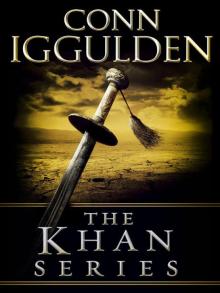 The Khan Series 5-Book Bundle
The Khan Series 5-Book Bundle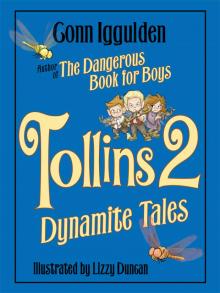 Tollins 2: Dynamite Tales
Tollins 2: Dynamite Tales Tollins: Explosive Tales for Children
Tollins: Explosive Tales for Children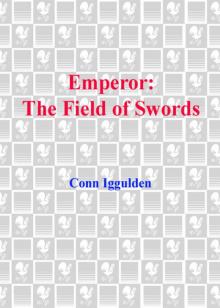 The Field of Swords
The Field of Swords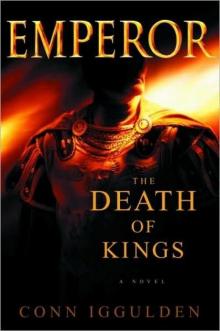 The Death of Kings
The Death of Kings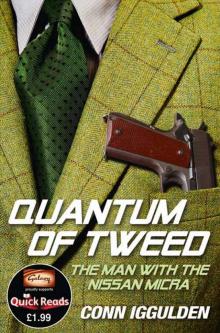 Quantum of Tweed: The Man With the Nissan Micra
Quantum of Tweed: The Man With the Nissan Micra Bones of the Hills
Bones of the Hills Genghis: Birth of an Empire
Genghis: Birth of an Empire The Gates of Rome
The Gates of Rome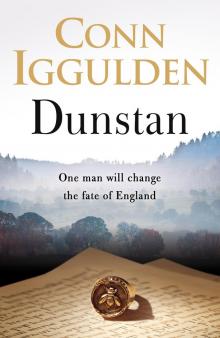 Dunstan
Dunstan Fig Tree
Fig Tree The Gates of Athens
The Gates of Athens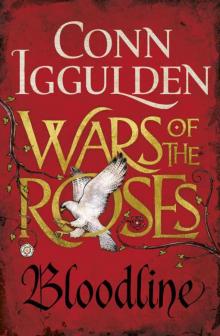 Stormbird
Stormbird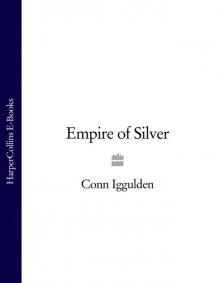 Khan: Empire of Silver
Khan: Empire of Silver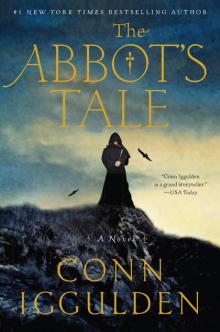 The Abbot's Tale
The Abbot's Tale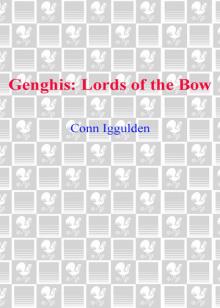 Gengis: Lords of the Bow
Gengis: Lords of the Bow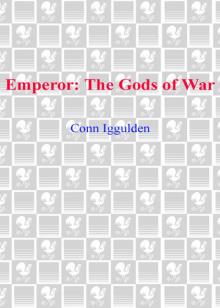 The Gods of War
The Gods of War Blackwater
Blackwater Ravenspur: Rise of the Tudors
Ravenspur: Rise of the Tudors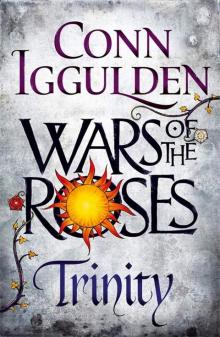 Wars of the Roses: Trinity (War of the Roses Book 2)
Wars of the Roses: Trinity (War of the Roses Book 2) The Gods of war e-4
The Gods of war e-4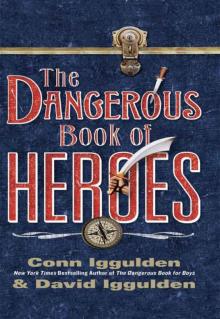 The Dangerous Book of Heroes
The Dangerous Book of Heroes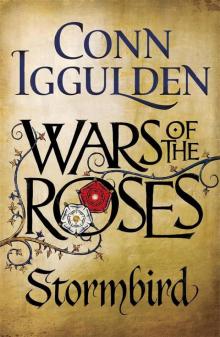 Stormbird wotr-1
Stormbird wotr-1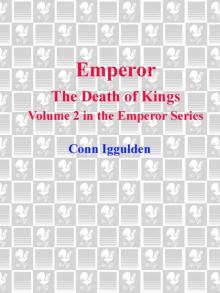 Emperor: The Death of Kings
Emperor: The Death of Kings Conqueror (2011) c-5
Conqueror (2011) c-5 The Dangerous Book for Boys
The Dangerous Book for Boys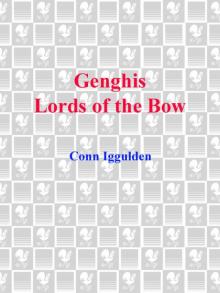 Genghis Lords of the Bow
Genghis Lords of the Bow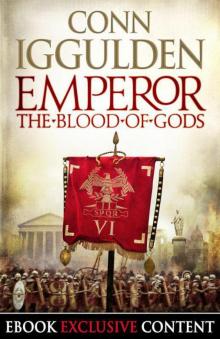 Emperor: The Blood of Gods (Special Edition) (Emperor Series, Book 5)
Emperor: The Blood of Gods (Special Edition) (Emperor Series, Book 5)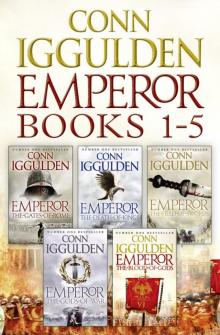 The Emperor Series: Books 1-5
The Emperor Series: Books 1-5 Lords of the Bow c-2
Lords of the Bow c-2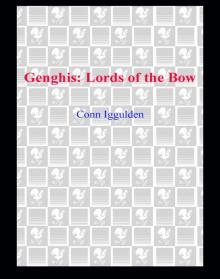 Lords of the Bow
Lords of the Bow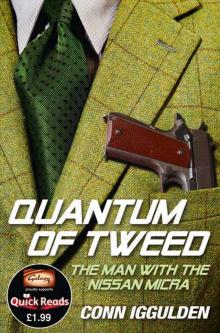 Quantum of Tweed
Quantum of Tweed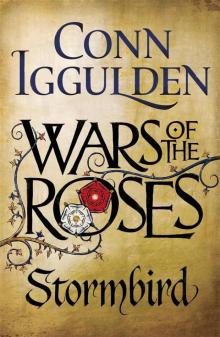 Wars of the Roses 01 - Stormbird
Wars of the Roses 01 - Stormbird Empire of Silver c-4
Empire of Silver c-4 Birth of an Empire
Birth of an Empire Conqueror (2011)
Conqueror (2011)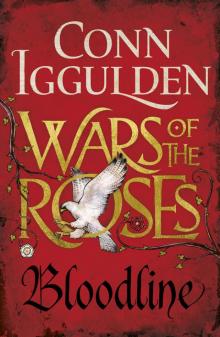 Wars of the Roses: Bloodline: Book 3 (The Wars of the Roses)
Wars of the Roses: Bloodline: Book 3 (The Wars of the Roses) Bones Of the Hills c-3
Bones Of the Hills c-3 Empire of Silver
Empire of Silver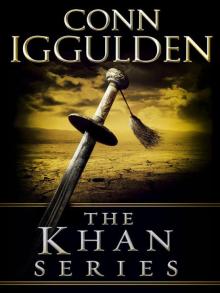 The Khan Series 5-Book Bundle: Genghis: Birth of an Empire, Genghis: Bones of the Hills, Genghis: Lords of the Bow, Khan: Empire of Silver, Conqueror
The Khan Series 5-Book Bundle: Genghis: Birth of an Empire, Genghis: Bones of the Hills, Genghis: Lords of the Bow, Khan: Empire of Silver, Conqueror The Falcon of Sparta
The Falcon of Sparta Explosive Tales for Children
Explosive Tales for Children